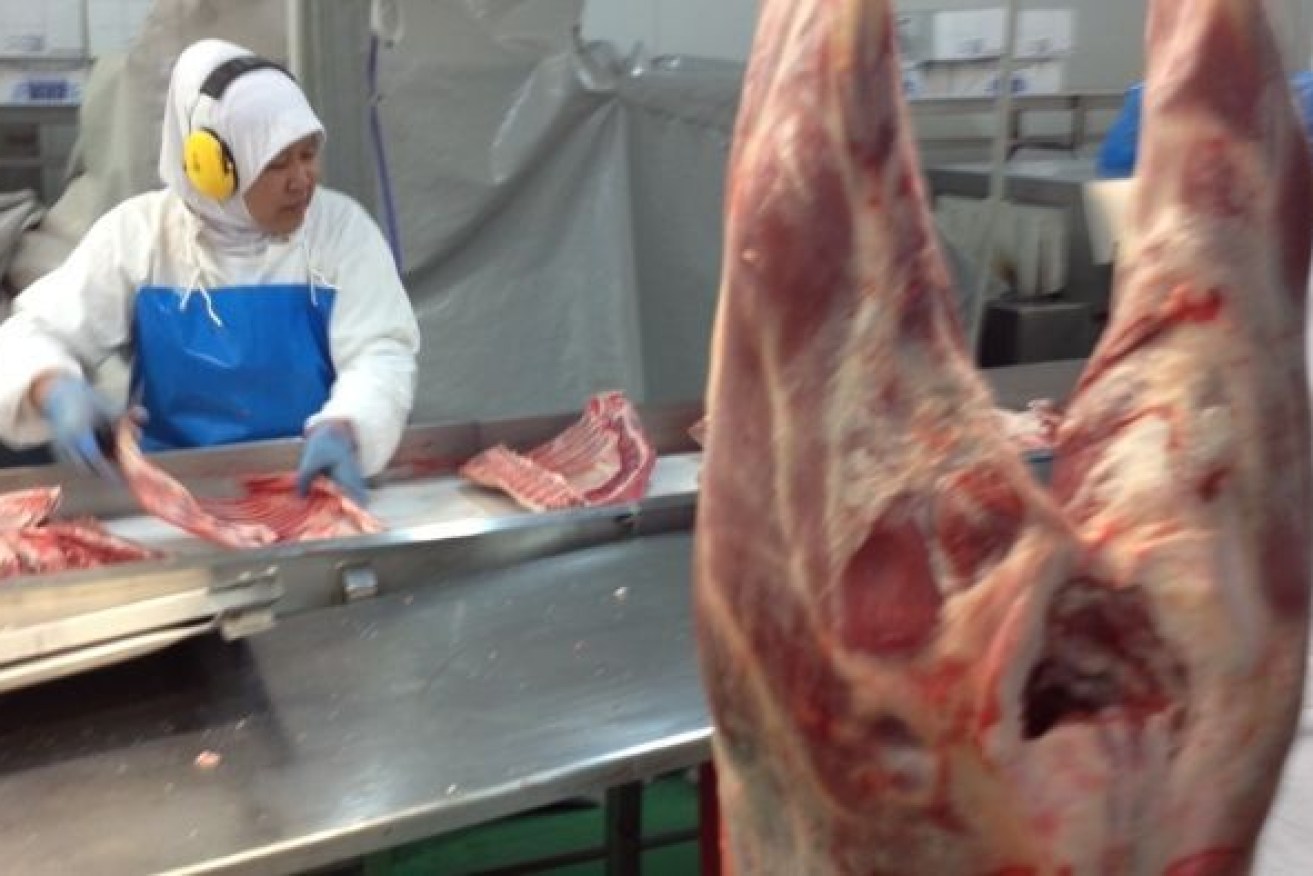Inside the slaughterhouse: Why abattoirs are a breeding ground for COVID-19


It isn't the animals which are responsible for high rates of coronavirus infections in abattoirs. Photo: AAP
Abattoirs are fast becoming coronavirus hotspots around the world, raising questions about the working conditions inside meat factories that may be contributing to the outbreaks.
So far, clusters have emerged at several meat factories in Germany, France, Ireland, Spain, Brazil, Canada, the United Kingdom, the United States and Cedar Meats in Victoria.
The latest outbreak at a German meat factory has now infected more than 1000 workers, forcing hundreds of families in the north-west city of Gütersloh into quarantine.
But the trend is even worse in the US, where slaughterhouses are closing one after another.
At least 5000 workers have been infected at American poultry farms and meat processing factories, according to estimates from the Centres for Disease Control (CDC).
In Victoria, more than 110 people contracted the coronavirus at Cedar Meats in Brooklyn, the state’s largest coronavirus outbreak.

The coronavirus cluster at Melbourne’s Cedar Meats was the state’s biggest outbreak.
So what’s going on?
It might seem logical that slaughterhouses, like wet markets, could be a potential hotbed for viruses given the large number of animal carcasses regularly exchanging hands.
But Archie Clements, a professor of infectious diseases at Curtin University, said the outbreaks have “nothing to do with dead animals”.
“Coronavirus transmission in Australia is occurring from human to human, not animal to human,” Professor Clements, who used to work in an abattoir, told The New Daily.
“There is no evidence at all it’s coming from the animals.
“It’s more to do with the people working in close proximity for extended shifts for long periods of time.”
He also said it was possible the cool, humid conditions inside slaughterhouses made it easier for the virus to spread because cool air tended to hold viral particles longer and more effectively than warm air.
Conditions on the slaughter floor
Abattoirs are a messy business, with many workers standing closely together for long periods of time.
“The nature of the work is fairly congested where people work in close proximity to each other,” said Matt Journeaux, secretary of the Queensland branch of the Australasian Meat Industry Employees Union.
“Each person has to perform a particular job in their section of the chain, so it’s very hard to avoid that close proximity while doing that work.”
Most abattoirs are divided into two major sections: The slaughter floor and the boning room.

Working in an abattoir can be immensely challenging. Photo: AAP
On the slaughter floor, “the animal is knocked, stunned, stuck, skinned, eviscerated then sawn in half”, Mr Journeaux told The New Daily.
The animal will then be moved into a large cooler to be chilled overnight.
The following day, the animal will be taken into the boning room, where workers will take out bones and cut it into portions for wholesale sellers.
“The job doesn’t lend itself that readily to automation or machinery,” Mr Journeaux said.
“It’s a physically demanding job with long hours, and obviously if people are run down, they’re more susceptible to catching things.”
Workplace culture
Meat factory jobs are not for the faint-hearted. They require tough, hard-working people.
Is it possible some of these dedicated workers, whose approach to their own health is often a “she’ll be right” attitude, are still coming to work when sick?
Not in Australia, Mr Journeaux said.
“There’s a possibility some people might turn up sick, but I think there is enough information out there now about COVID-19 that they wouldn’t turn up,” he said.
The long hours and often stressful conditions, however, can weaken people’s immune function, Professor Clements said.
“Abattoir workers tend to come from backgrounds where people have higher rates of smoking and other lifestyle factors that predispose them to respiratory illness,” he added.
“Some of them may not be aware of the need to avoid coming to work if they’re sick.”








